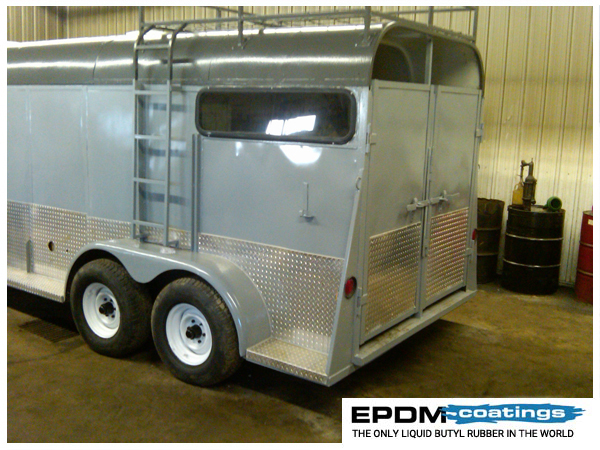RV roofs are lightweight, durable and resistant to the elements, but that doesn’t mean they’re impenetrable. It actually takes surprisingly little to damage your RV’s roof. Strong winds might blow a branch down, punching through the roof and creating a serious leak. Over time, mold and mildew might compromise your roof’s integrity as well. RV roof repair can be tricky, particularly if you’re doing it yourself, but there are several tips that can make the process easier.

RV Roof Tip-1 : Find the Leak First
Your leak might be obvious. That branch sticking out the top of your RV? That’s the most likely culprit. However, it’s also possible that the source of the leak isn’t that obvious. If that’s the case, you’ll need to get up on top of the RV to inspect things. If your RV is older, chances are it has a metal roof. However, if it’s a newer model (manufactured within the last 10 years or so), it probably has an EPDM (rubber) roof. Don’t walk on metal roofs without first putting down supports – plywood slats work. EDPM roofs can be walked on with care.
RV Roof Tip-2 : Find the Defect
There’s a difference between RV leaks repair and just sealing leak temporarily. If there’s a defect causing the leak, such as a puncture, you’ll need to make an actual repair to the underlying structure of the roof. If the rubber coating over the roof is damaged, you can use RV rubber roof repair to seal it. If there’s a defect or damage, repair it first, then seal the damaged area with RV roof repair rubber.
RV Roof Tip-3 : Small Leaks
If you notice a very small water leak from your RV’s roof, you can handle it without too much trouble. These leaks generally involve nothing more than a minor problem with the rubber roof or one of the seals. In these instances, a couple of coats of RV rubber roof repair sealant will be all that’s necessary. However, before you do anything, make sure the leak really is minor.
RV Roof Tip-4 : A Note on Bubbling
It’s normal to see some bubbling on your RV’s roof. However, that doesn’t mean these are defects or flaws. Rather than trying to cut out the bubble, just repair the leak. Bubbles will usually go away on their own over time. In fact, it’s somewhat normal to see bubbles form in the rubber leak repair material itself. These will shrink and disappear shortly.
RV Roof Tip-5 : Buy the Right Products
As a final note, you should make sure you’re actually buying products made for RV roof repair. There are products designed for residential and commercial use that are similar, but you need to make sure that you’re purchasing rubber roof repair material designed for use with RVs. RVs uses EPDM roofing material, and it takes the right type of material to repair leaks here.
RV roof repair doesn’t have to be time consuming or difficult. A handy owner can usually tackle basic RV roof repair needs on their own. However, know when a problem is too big for you, and get professional help.
For complete training and guide see RV Roof Repair Training Video.


Thanks for the tips, can you give us an estimated cost?